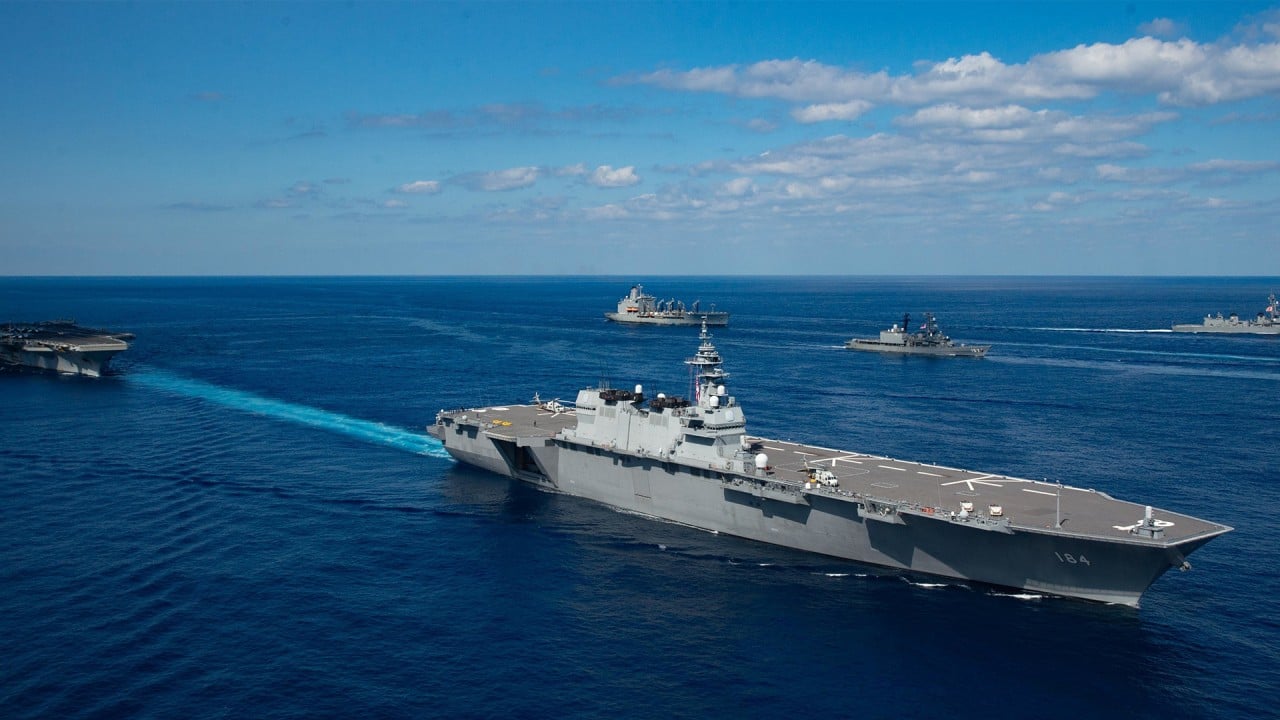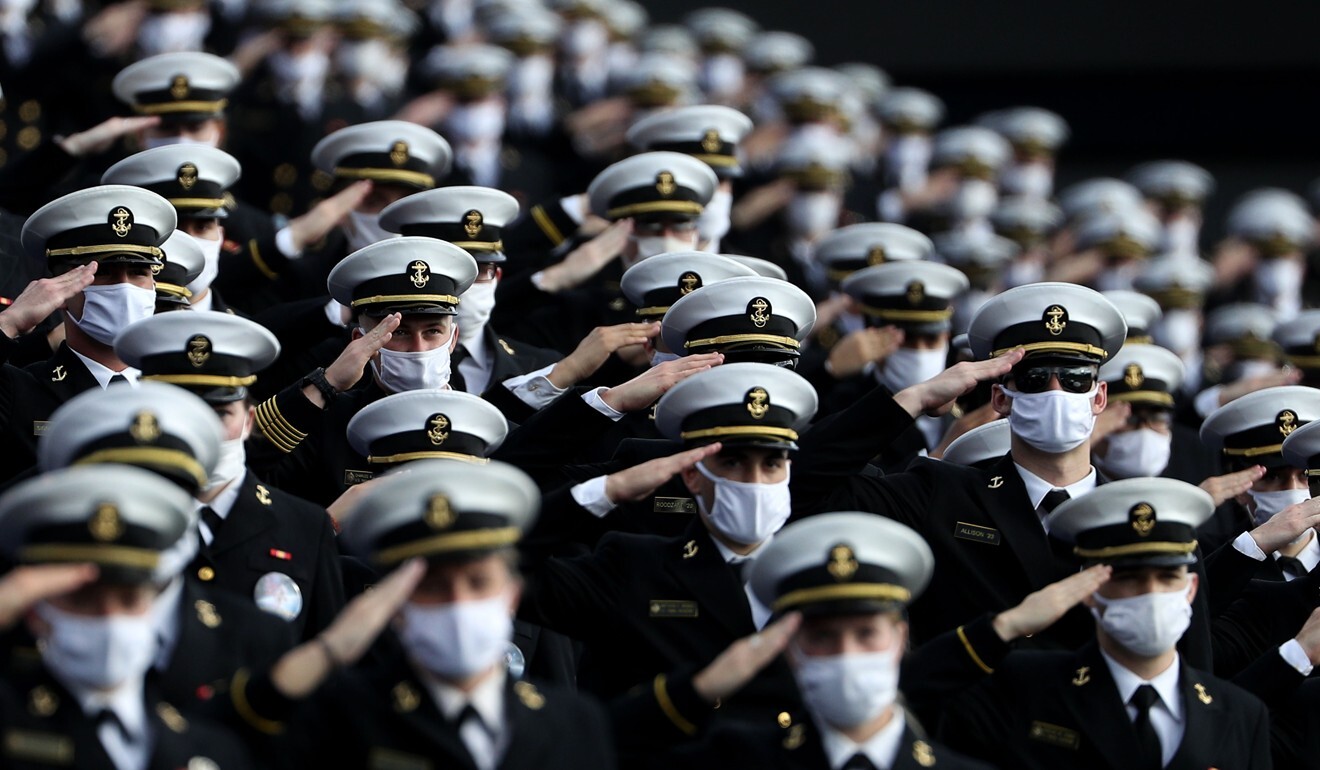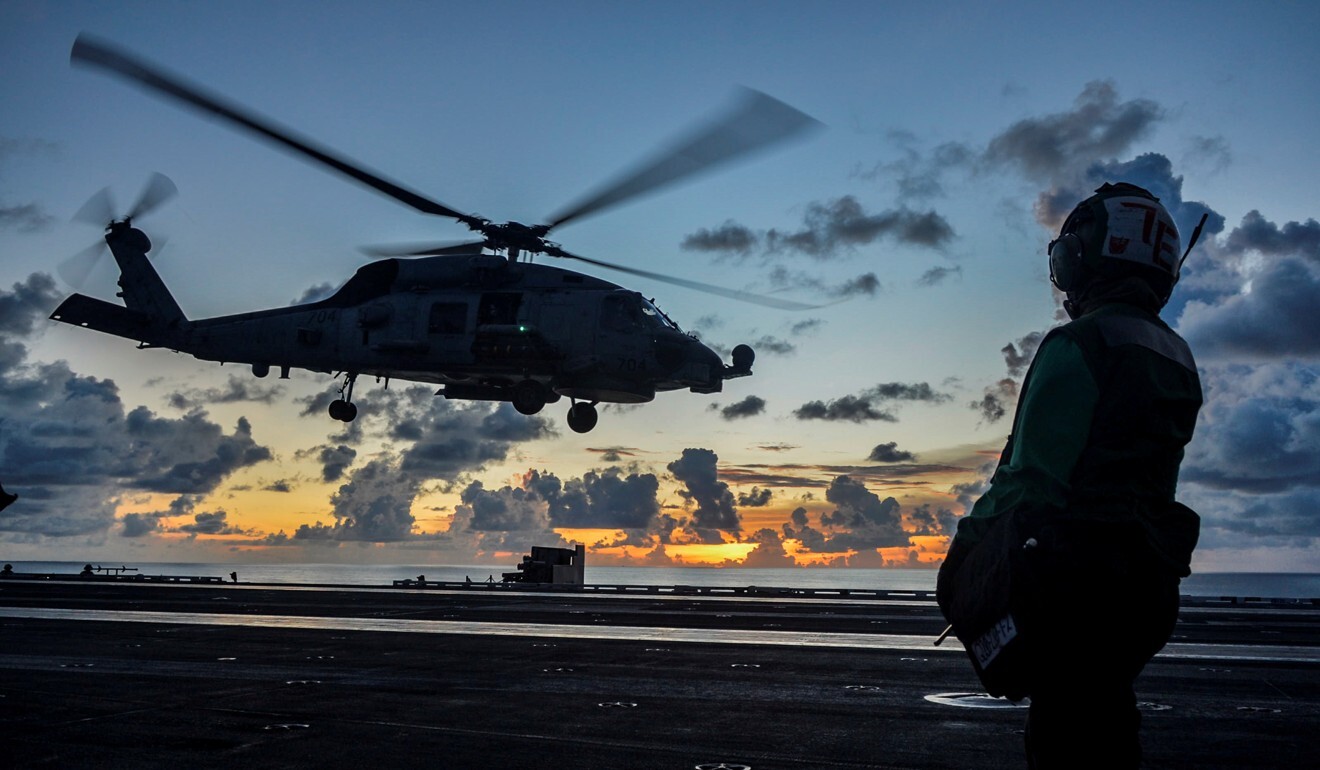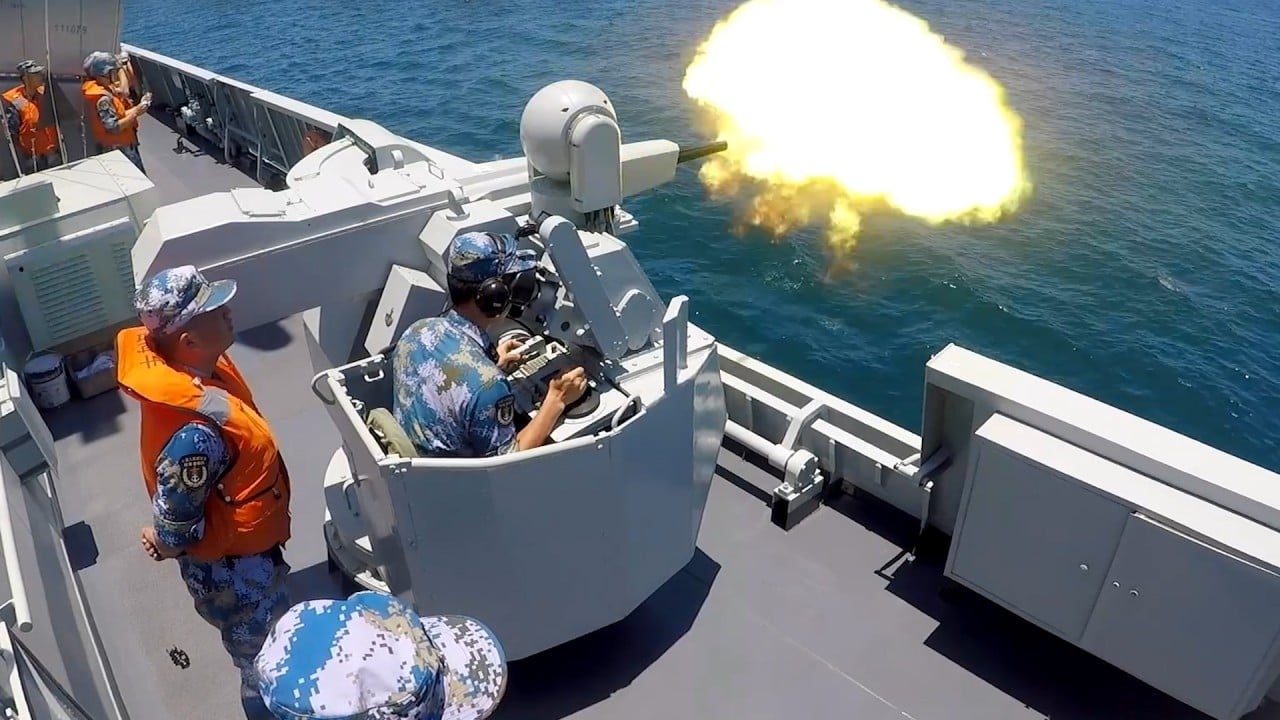
A US Navy First Fleet in the Indian Ocean, based out of Singapore? Not likely, analysts say
- The US Navy Secretary’s proposal raised eyebrows among observers, who say the plan is a ‘trial balloon’ that is unlikely to garner immediate regional support
- Locating a US naval base in Singapore is also seen as a tricky proposition given the island nation’s efforts to not take a side between Beijing and Washington
While Asian countries have by and large continued to welcome the American forward presence as a vital hedge against China, observers said the introduction of a new permanent US base in the region would cause much more alarm in Beijing than governments in the neighbourhood could stomach.
It would be deemed unacceptable for the island nation – among Washington’s key strategic partners in Southeast Asia – to host a permanent US naval base, as it worked “assiduously” to repel the impression that it was in a formal military alliance with Washington, said Singapore-based regional security expert Collin Koh.
“I believe a Biden administration would exercise greater caution towards regional political sensitivities to properly review [the proposal] with US allies and partners, if not scrapping the plan outright come next January,” he said.

02:14
Japan-US hold joint military drills including cyberwarfare training as concerns about China grow
Nonetheless, others, such as John Bradford – also an RSIS analyst – pointed out that from a US Navy standpoint there were merits to a new US fleet in the region, given how the Japan-based Seventh Fleet was “overworked” as a result of its large remit and as it managed Washington’s “greatest maritime challenges”.
In a US-China war, whose side is Southeast Asia on?
‘OCEAN CROSSROADS’
US Navy Secretary Kenneth Braithwaite proposed the creation of the new First Fleet in the “crossroads between the Indian and Pacific Oceans” at a symposium on Tuesday.
“We can’t just rely on the Seventh Fleet in Japan,” the former one-star rear admiral was quoted as saying by USNI News. “We have to look to our other allies and partners like Singapore, like India, and actually put a numbered fleet where it would be extremely relevant if, god forbid, we were ever to get in any kind of a dust-up.”
There is a substantial difference between enabling limited US navy deployment from Singapore, with a rather small footprint, and facilitating a numbered fleet basing
He said: “More importantly, it can provide a much more formidable deterrence. So we’re going to create the First Fleet, and we’re going to put it, if not Singapore right [away], we’re going to look to make it more expeditionary-oriented and move it across the Pacific until it is where our allies and partners see that it could best assist them as well as to assist us.”
Braithwaite, the Navy’s top civilian leader, said he had not discussed the plan with new acting defence secretary Christopher Miller, but had done so with Mark Esper, the Pentagon chief who was fired by President Donald Trump earlier this week.
USNI News said Braithwaite did not provide further details on how large the proposed First Fleet would be, or if ships from other fleets would be forward deployed to the new fleet, and how operations would be divided between other fleets in the Asia-Pacific region.
A US Navy spokesman subsequently told the news portal “no decisions have been made on timing or location for the establishment of an additional numbered fleet in the Indo-Pacific”.

The US Seventh Fleet, based out of Yokosuka in Japan, covers some 48 million square miles from the International Date Line in the mid-Pacific Ocean to the India-Pakistan border in the Indian Ocean. The Fifth Fleet, based out of Bahrain, covers the Middle East and the western Indian Ocean.
Koh from the RSIS said Braithwaite’s plan did not appear “well thought out”.
How the US can maintain influence over Asean, whether Trump or Biden wins
He drew comparisons to another proposal from the Trump administration: ousted Pentagon chief Esper’s suggestion in August last year for the deployment of intermediate-range missiles in Asia.
That plan has since been characterised as a pipe dream by analysts, with even US treaty allies such as Japan and South Korea seen to be uneager to host the missile facilities.
The new proposal fit into a “broader pattern of unilateralism that reflects such ‘test balloons’,” Koh said.

SINGAPORE BASE? UNLIKELY
Braithwaite’s explicit mention of Singapore as the base for the theoretical new fleet also raised eyebrows among analysts.
Since 1990, the city state has granted the US access to its military facilities. US Navy assets including nuclear submarines and aircraft carrier groups are frequent visitors to Singapore’s Changi Naval Base – which serves as a refuelling and resupply point for American forces in the Western Pacific.
From 2013, the city state started hosting rotationally deployed US littoral combat ships and later state-of-the-art P-8 Poseidon maritime surveillance planes.
Indonesia, Singapore steer clear of US-China dispute in Pompeo’s South China Sea outreach
But these arrangements do not constitute a formal military alliance between the Western superpower and the Southeast Asian nation, with the government of Prime Minister Lee Hsien Loong stressing in recent times that its strategic relationship with Washington did not mean it was taking sides in the US-China rivalry.
Responding to This Week in Asia’s queries, a Singapore defence ministry spokesman said a 2012 agreement for the rotational deployment of four American littoral combat ships remained the “standing arrangement” on US naval deployment to the city state.
There were “no further requests from or discussions with the US Department of Defence on additional deployment of US ships in Singapore”, he said.

Said Thomas Daniel, a senior analyst with Malaysia’s Institute of Strategic and International Studies: “The cost for Singapore might outweigh the benefit should hosting a theoretical First Fleet be seen as supporting the US’ hard rebalance against China.”
As for the city state’s neighbours in Southeast Asia, Daniel said a permanent basing arrangement would not sit well, given how its current defence ties with Washington were already a cause for slight regional wariness.
Koh from the RSIS said Singapore would continue to ensure that – while it facilitates a sustained and durable US presence in the region – these efforts were not misconstrued “as a formal alliance with the US or that such defence relations equate to that effect”.
He said the island nation had “reportedly declined the offer to become a US non-Nato ally in 2003 and I believe Singapore seeks to maintain that”.

01:25
Hong Kong-based warship joins drill in South China Sea
Other analysts suggested the sheer scale of a permanent base made Singapore an unlikely choice.
“There is a substantial difference between enabling limited US navy deployment from Singapore, with a rather small footprint, and facilitating a numbered fleet basing,” the RSIS’ Suorsa said.
“Basing a larger naval contingent at a foreign port would require substantial resources and infrastructure at the host country. In Singapore’s case this would require huge expansion of any existing infrastructure. I don’t see it as politically feasible for Singapore to make such a move.”
Bradford, a retired naval officer who served on the Seventh Fleet, suggested the new fleet operating in the crossroads of the Indian and Pacific Oceans “would not necessarily require a footprint in Asia”.
“The US has plenty of experience conducting operations in one region with the commander being located far away. A First Fleet could be useful so long as its development is carefully planned and resourced,” he said.

